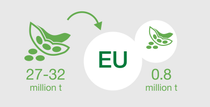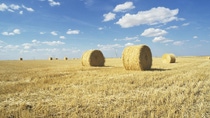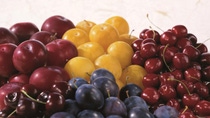Agriculture
Soybeans
As a rich source of protein, used globally in animal feed and food, soybeans yield both solid (meal) and liquid (oil) products. Soymeal is a high quality, in-demand protein ingredient for animal feed for livestock and fish and for protein in foods such as tofu and protein powders. Soy oil has a variety of food applications from cooking oil to margarine and is the primary commercial source of vitamin E in the US diet.

Farmers maintain high soybean yields through effective control of weeds which compete with crops for light, water and nutrients. The use of soybean varieties – bred using GM techniques to be herbicide-tolerant (HT) – in conjunction with broad spectrum herbicides offer one of the most effective means of weed control.
The only broad spectrum herbicides that can be used with HT soybean crops today are Glufosinate-ammonium and Glyphosate. Until recently, only Glyphosate-tolerant soy was available. Insufficient rotation of the herbicidal modes of action in the past has resulted in many weeds in vital soybean growing regions no longer responding to Glyphosate treatment. As such, farmers are increasingly aware of the need to rotate their use of Glyphosate with Glufosinate-ammonium to mitigate weed resistance.

Did you know?
- Farmers who adopted a “no-tillage” or “reduced tillage” practice after planting herbicide-tolerant soybean varieties saved over 885 million liters of fuel.
- The EU is one of the world’s largest import market of soybean, importing on average 27 – 32 million tonnes per year, while producing only 0.8 million.







